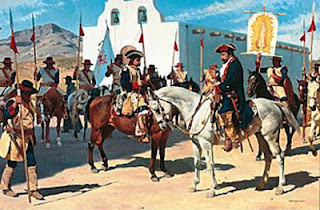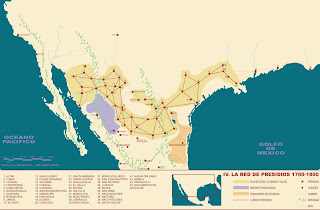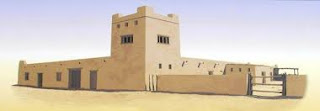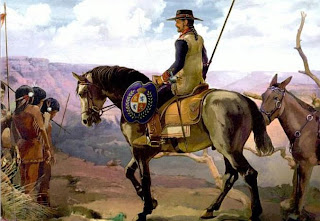|
Nobody has
ever needed to find the Fountain of Youth more than J. Michael
Francis. Okay, Ponce de León's famous fountain is probably nothing
but bushwa. That said, he needs to fill
his wineskin from those make-believe waters just in case.
Francis,
45, is a blond-haired, blue-eyed, baby-faced historian at the
University of South Florida St. Petersburg. His specialty is what
happened when the Spanish arrived in the New World. He knows a whole
lot. He also wonders if he has only scratched the surface, and
whether he needs to live forever to learn what he needs to know.
He
spends summers in Spain perusing fragile old documents, including
some that have never been opened before. Many have never been read
by the right pair of eyes, namely his. Like mold spore, he's at home
among ancient manuscripts.
Perhaps
one day he will locate what some scholars consider the Holy Grail
— Juan Ponce's famous travelogue. Shakespeare was alive last time
anybody claimed to have seen it.
But
that quest will have to wait for a bit. April 3 will mark the 500th
anniversary of Señor Ponce's arrival on the shores of what the
bearded one named La
Florida. For Francis, perhaps our state's most prominent
Spanish-Florida historian, it's showtime. During most of his career,
he has performed only in the classroom. But now he has been handed
the public microphone. At this moment in his own fascinating history
he's the man.
Everybody
wants to hear what he has to say about Ponce de León — in Spain,
in New York, in Washington and, of course, in Florida. He's on the
radio, TV and in auditoriums crowded with folks who want to know
exactly where Ponce landed in Florida, how he interacted with native
people but mostly about the Fountain of Youth.
It's
not easy to tell everyone at a time like this that the historical
record boasts holes big enough to swallow a Spanish galleon.
Fountain
of Youth myths go back 400 years before the birth of Christ. When
Ponce was growing up, he might have heard them.
In
Florida we're enamored with Ponce and his fountain. We name springs,
parks, streets and town squares after the icons. At the Fountain of
Youth Archaeological Park in St. Augustine, paying tourists line up
for a cup of sulfur-flavored water. On U.S. 19 recently, Francis
executed a double take upon noticing the "Fountain of Youth
Institute,'' a plastic surgery clinic in Palm Harbor. The
professor's office is two blocks from St. Petersburg's own Fountain
of Youth, which is behind the right field fence of the waterfront
baseball stadium.
"The
Fountain of Youth myth is part of our history,'' Francis says.
"In Florida we have a lot of fun with it. But the truth
is Ponce was never searching for a Fountain of Youth. There, I've
said it.''
Is
anyone listening?
Let's
try it again. Everything most of us learned about Ponce in
elementary school is wrong.
"Ponce,''
Francis tells surprised audiences,
"didn't discover Florida — the natives were here first. He
named it.''
What
some of us automatically proclaim as fact turns out to be dubious
history.
"We
don't know where Ponce landed,'' he tells disappointed chamber of
commerce leaders in St. Augustine and in Melbourne Beach, cities
that both claim to be the site of his landing and want his blessing.
Some
Floridians, of course, simply don't care.
The
Florida Lottery just announced a "scratch-off game" in
honor of Ponce. It includes a goofy map that looks like something
drawn by a right-handed cartographer practicing with his left. When
asked about it, Francis' eyes begin to glaze. Nice effort. But . . .
In a
state where most of us come from somewhere else, where a radio shock
jock known as Bubba the Love Sponge is frequent front-page news, a
serious historian has his work cut out for him.
Francis
can talk about history in perfect Spanish, of course. He can provide
the spelling and accent marks. But he could hire a skywriting plane
or put up billboards on the interstate and the truth about Ponce and
the fountain might not make a difference.
"If
you want to learn about early Florida history,'' Francis advises his
students, "you have to leave Florida. You have to have a
passport."
In
Spain sometimes he finds potentially valuable documents in private
homes and museums. But mostly he hunts them down in Seville at the
General Archives of the Indies. Almost a fortress, the grand
building collects five centuries' worth of musty material relating
to the Spanish conquest of the New World.
He
wakes early, sips a cafe latte and swallows a Zyrtec. Without an
antihistamine his eyes weep and his nose drips. Years ago ancient
mildew in the archives gave Francis an infection that burst his
eardrum. But after antibiotics and cotton balls, he was good to go.
Six
miles of shelves support 43,000 volumes and approximately 80 million
pages of material. Ponce explored for gold; Francis digs for the gem
of historic significance, something he might bring home to set the
record straight.
Born
in the frozen Canadian province of Alberta, he was a neighborhood
hockey player who dreamed of the stage. His dad, Gary, sold
insurance, but it was his ballet-dancer mother, Carole, who passed
on her artistic leanings. In high school he directed plays.
As an
exchange student in Peru, though, he learned Spanish and became
fascinated by the sad history of the Incas and their cruel
conqueror, Francisco Pizarro. In graduate school at the University
of Alberta, a mentor warned him away from the 16th century.
"You'll have to learn how to decipher those old Spanish
documents. Study 18th century history instead. The documents are
easier to read.''
He
still remembers the traumatic day in Colombia when he slouched
humiliated for hours, certain that librarians were grinning at his
hubris as he stared at what might as well have been hieroglyphics.
Eventually he found a medieval Latin scholar who helped. It took a
long time, but he learned to read ancient text as easily as the
morning newspaper. In England, at Cambridge, his doctoral
dissertation about ancient Colombians was called The Muisca
Indians Under Spanish Rule, 1537-1636.
Then
he hit the jackpot for a Spanish-Florida scholar. He got a job
teaching history and paleography — the art of reading ancient
writing — for a dozen years at the University of North Florida, a
short drive from St. Augustine, America's oldest city and one
alleged landing site of Ponce.
Sometimes
he led field trips in South and Central America to explore Mayan and
Inca ruins in deep jungles where dangers included weeping homesick
students, irate revolutionaries and the occasional fer-de-lance. He
usually wore armored leggings to protect his tender flesh against
the hollow fangs of the viper alleged to kill a victim within nine
steps.
He
met Annie Martin 15 years ago. An art historian, she was beautiful
like a young Lauren Bacall and a master southern cook. During their
courtship she introduced him to grits and cornbread; he read to
her The
Lord of the Rings and The
Hobbit. They watched his favorite movie, Aguirre,
the Wrath of God, Werner Herzog's art film about an obsessed
conquistador's search for El Dorado, the mythical city of gold.
Aguirre reminded Annie of a certain history professor.
"Michael
is a real adventurer,'' she says. "When
he's researching, he begins to feel he is living in the past.''
Last
August he was named the Hough Family Chair of Florida Studies at
USF. He teaches history, paleography and in summer takes his best
students to Spain to hunt documents. If he dies before unlocking the
secrets of Ponce, perhaps the next generation will succeed. He
never knows what they will find.
On his
best day among the musty documents in the archives he discovered the
name Pablos Juan. "He was a soldier in St. Augustine
under Gov. Pedro Menendez," Francis begins. "After Pedro
died in 1574, his son-in-law took over. By 1577, King Philip II in
Spain was unhappy with the new management of his Florida colony —
there were allegations of incompetence and corruption. So he sent an
inspector to hear testimony.
"Pablos
Juan raised his hand. He had something to say: 'The new governor has
stolen my honor. He needs to be punished and punished harshly.'
"
Warning:
Indelicate 16th century punishment described ahead.
"Pablos
Juan told the inspector that the new governor had poked him in the
chest with a pike and ordered him to kneel and kiss the butt of his
bull mastiff — not once but three times. Pablos Juan answered that
'The mouth that had received the body of Christ in Communion was not
going to kiss the a-- of a dog.'
Patience apparently was not among the governor's qualities.
"He
grabbed Pablos Juan by what he called the 'little heads' — the
testicles — to force Pablos Juan to his knees. His soldiers then
lifted the tail of the mastiff. Pablos Juan kissed the butt of the
dog.
"The
king's administrator wanted to know the reason for the unusual
punishment. It turned out Pablos Juan had teased that dog. The
conquistadors put great value on their mastiffs, which were commonly
used to intimidate Indians, so the administrator thought Pablos
Juan's cruelty to the governor's dog was a graver offense than his
own personal affront.''
A
bizarre incident, certainly. But historically earth-shaking?
"So
Pablos Juan disappears from the record. For 11 years. Then I'm
looking through documents a few years later and his name pops up
again. It's 1588 and he's in Spain. This time the crown is
investigating the burning and looting of St. Augustine by the
Englishman Sir Francis Drake. The administrator wants to know how
that could have possibly happened.
"Pablos
Juan steps forward to testify against the
same governor who had humiliated him with the dogs.
'During the fire,' he tells the crown, 'it was the governor
who stole money from the Royal Treasury, not Drake.'
"Now that's interesting.
I'd love to go to England and read old documents and learn what Sir
Francis Drake had to say. What if Pablos Juan was telling the
truth?''
Kissing
dog butts? Perhaps fans of Bubba the Love Sponge might be
induced to read some history after all.•
In the
archives, he keeps his eyes open for anything regarding Ponce, of
course. We know that Ponce was a wealthy man's son born about 1474.
We know he somehow escaped a rural upbringing to become a soldier.
In 1493, he was picked to accompany Columbus on his second voyage to
the New World.
In the
Caribbean, Ponce was known as a ferocious conquistador. When native
slaves rebelled over their harsh treatment, he came down with heavy
hand. As a reward he was made governor of Puerto Rico in 1509.
Two
years later he was deposed by the envious son of Christopher
Columbus, a man with deep political connections. Ponce asked King
Ferdinand II in Spain to intercede. Ferdinand refused, but suggested
that his old governor might do some exploring on his own. He could
share what he found with the crown.
On
March 3, 1513, Ponce's expedition, which included three ships,
sailed from Anasco Bay in western Puerto Rico. Creeping northwest,
sailors sighted what they believed was an enormous island on April
2.
Ponce
waded ashore the next day. The land was lushly verdant. It was
Easter week, the feast of the flowers, so he named the island La
Florida and claimed it for the crown.•
Here
it is important to talk again about Ponce's famous missing log. If
we had it, we might be able to say what happened during the
expedition with more confidence. But what we have are secondhand
accounts of questionable value.
Decades
after Ponce's death, a historian named Gonzalo Fernández de Oviedo
y Valdés, a confidant of Christopher Columbus' heirs and thus a
sworn enemy of Ponce's relatives, wrote that only someone as stupid
as Ponce would have gone looking for something so clearly a legend
as the Fountain of Youth.
Think
about it: Nowhere in King Ferdinand II's extremely detailed marching
orders to Ponce in 1511 was the "Fountain of Youth" ever
mentioned. It's as if Oviedo concocted the whole fountain business
to make Ponce look like a superstitious idiot.
Now
let's move forward about a half century, when another prominent
though allegedly lazy historian picks up his quill. In 1601 Antonio
de Herrera y Tordesillas, known for his affection for the limelight,
publishes another history. He repeats the dubious claims about Ponce
and the Fountain of Youth.
He
also claims to have found Ponce's missing log. The missing
log. A monumental find.
So why
not print the important historic document word for word? That
question has puzzled Francis and other historians over the
centuries. It makes them wonder if Herrera really had the log or
whether his claim was a publicity stunt.
Herrera
places Ponce's landing site as a little north of St. Augustine. Even
if he had the log, the landing site could be way off given that
Ponce's navigation tools were crude at best. A re-enactment of
Ponce's voyage's two decades ago had him landing more than 100 miles
south.
Whatever.
Ponce lands. He stays in the area six days. Herrera provides no
details about what happened. We have no idea whether Ponce
encountered any natives or whether he drank from a spring.
Eventually,
Ponce's expedition heads south along the coast, constantly bucking
the northerly current of the Gulf Stream. From time to time the
ships head for shore. Twice on the east coast they encounter hostile
natives who shoo them back to sea.
The
Ponce expedition continues south and skirts the Keys. According to
Herrera's account — and again remember he might have
Ponce's log — Ponce thinks the forlorn islands resemble martyrs
because "viewed from afar the rocks as they rose up seemed like
men who are suffering.''
Passing
the Keys, Ponce turns north along Florida's gulf coast and lands
most likely in the vicinity of today's Fort Myers. The fierce
natives known as Calusa paddle out in huge canoes and fire arrows
from stout bows. Ponce retreats.
Turning
back south, he lands among a collection of islands that
unfortunately lack fresh drinking water but provide many tasty sea
turtles to eat. He calls the islands near today's Key West the
"Dry Tortugas," their name today.
Ponce
stops in Cuba, then heads home to Puerto
Rico. Eight years later he returns to La
Florida with another expedition. This time he intends to
establish a settlement. Alas, a poisoned Calusa arrow pierces his
thigh. The wound festers. A ship takes him to Cuba. He dies.
So
much for eternal youth.•
It was
November. Dry and cold. In a windswept medieval village in northern
Spain the USF professor walked in the footsteps of Ponce de León.
He was born here.
I was
on the tour Francis was leading for the Florida Humanities Council.
Santervás de Campos, population 65, stands on a hill amidst the
wilderness of northern Spain. In the distance we saw the
snow-capped, Cantabrian mountains where brown bears still roam and
wolves still howl. A vulture I couldn't recognize floated above the
village before vanishing over majestic plains that extended into the
distance.
"I've
never been here before,'' Francis said. "I'm
thrilled."
Ponce's
log couldn't possibly be here. If it exists, it may be in the
archives in Seville hidden among the millions of other documents.
Still, it was easy for Francis to imagine a 15th century boy waving
a wooden sword and dreaming of the sea. What went through his mind?
Children don't need a Fountain of Youth. They already are immortal.
Santervás
de Campos, isolated in the Spanish wilderness, is not a tourist
mecca. But it would like to be, starting this year, for Americans
and Floridians who want to investigate its history. Workmen recently
put up a statue in Ponce's honor. It guards his baptismal church,
Iglesia de San Gervasio, where Mass has been celebrated for more
than eight centuries.
Outside
the Romanesque building a gray-haired parishioner introduced himself
as Felix Agundez Ponce, a farmer who grows sunflowers and happens to
be the direct heir of the man who named La
Florida and was killed by Calusa Indians. "How many
generations has it been?'' I asked. Francis interpreted for me:
"I don't know, señor. Five hundred
years is a long time.''
Inside
the church, Mayor Santiago Baeza Benavides stood beaming at the
altar to welcome the visitors. His wife smiled and his three
rambunctious sons played in the pews as the boy Ponce might have
once.
"We
are steeped in the history of Ponce de León from birth,'' the mayor
said. "When I was a child my father
told me all about him. I tell my sons what my father told me.''
I
asked what that could be.
"Ponce
de León, who was born in this village, was a brave and great man
who went out in search of adventure. He went out in search of the
Fountain of Youth but never found it.''
Then
what happened? "He died.''
Michael
Francis nodded. Then he smiled until his eyes disappeared.
|










































































































































































